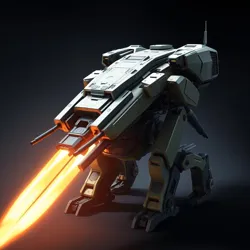Biomechanical Warfare Systems

Biomechanical Warfare Systems (BWS) represent a revolutionary class of military technology that combines advanced robotics, synthetic biology, and quantum computing to create sophisticated combat platforms. First developed in 2155, these systems form the backbone of modern military operations and defense initiatives.
Core Technologies
BWS utilize quantum neural networks integrated with synthetic organism architectures to create adaptive combat units. The foundation of these systems relies on advanced micro-fusion power cores and self-repairing nano-crystalline structures that provide both durability and flexibility in combat situations.
Major Classifications
Combat Units
- Mantis Class Combat Units - Primary assault platforms
- Scorpion Class Defense Units - Defensive and area denial specialists
- Spider Infiltration Units - Stealth and reconnaissance systems
Support Systems
- Beetle Transport Units - Heavy logistics and supply
- Wasp Strike Squadrons - Aerial combat and support
- Ant Construction Corps - Field engineering and fortification
Operational Capabilities
BWS excel in various combat scenarios through their ability to: - Self-repair during combat operations - Coordinate through quantum swarm intelligence - Adapt tactics based on battlefield conditions - Operate in extreme environments
Strategic Applications
Urban Warfare
BWS units are particularly effective in urban environments, where their ability to scale vertical surfaces and operate in confined spaces provides significant tactical advantages.
Environmental Operations
Specialized units can function in extreme conditions, including: - Deep underwater operations - High-radiation environments - Chemical warfare zones - Zero-gravity combat
Ethical Considerations
The development of BWS has raised significant concerns regarding autonomous warfare ethics, leading to the establishment of the International Synthetic Combat Protocol in 2160.
Current Developments
Recent advances in quantum-biological fusion have led to more sophisticated combat units with enhanced decision-making capabilities and improved combat effectiveness. Research continues into new applications of synthetic biology in military operations.
See Also
- Synthetic Combat Evolution
- Military Quantum Computing
- Biomechanical Neural Systems
References
- Advanced Warfare Quarterly
- Journal of Synthetic Military Systems
- Combat Robotics Review